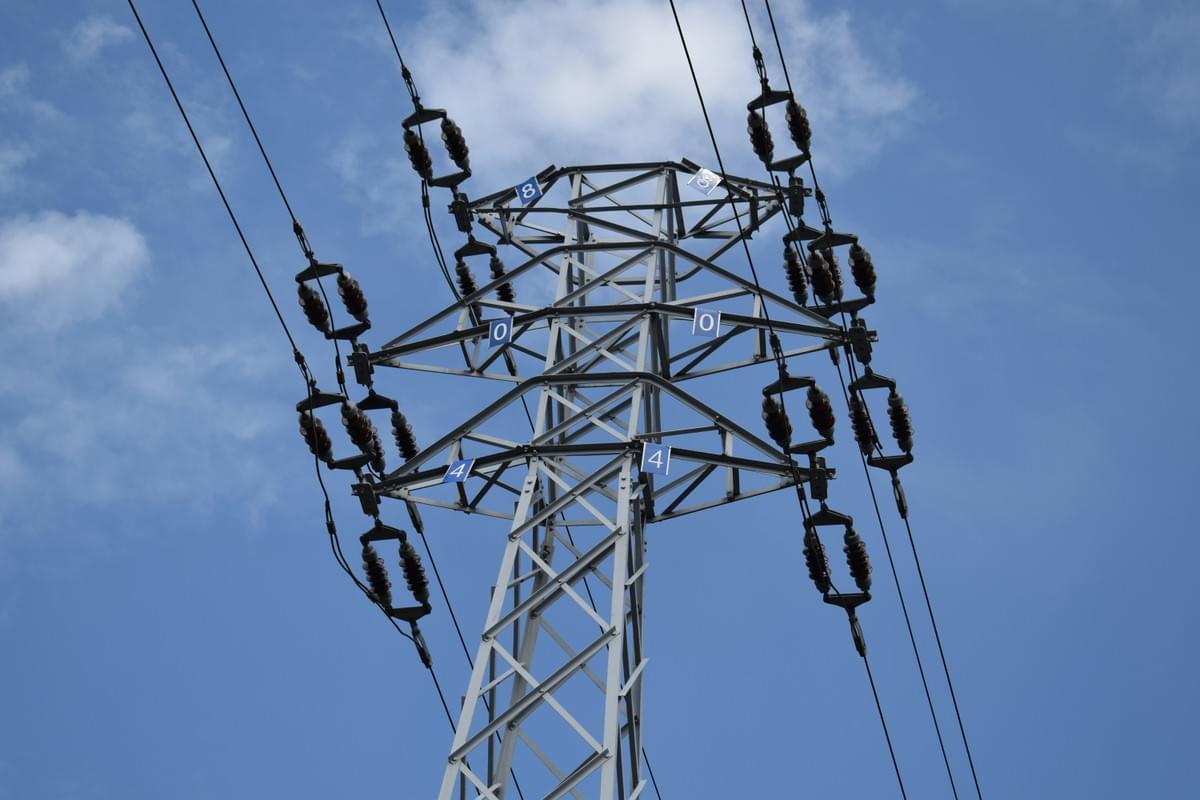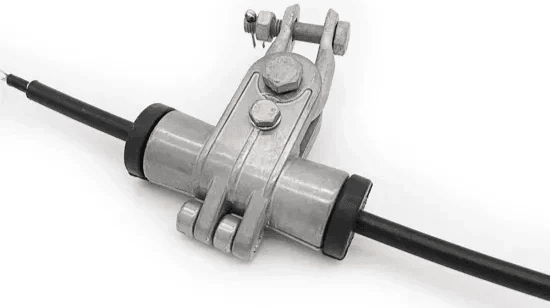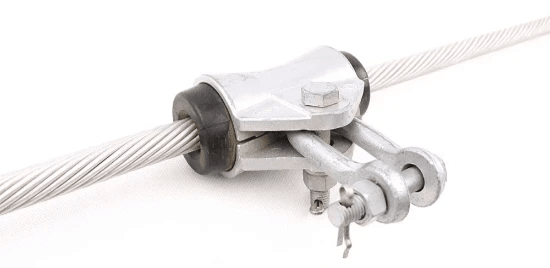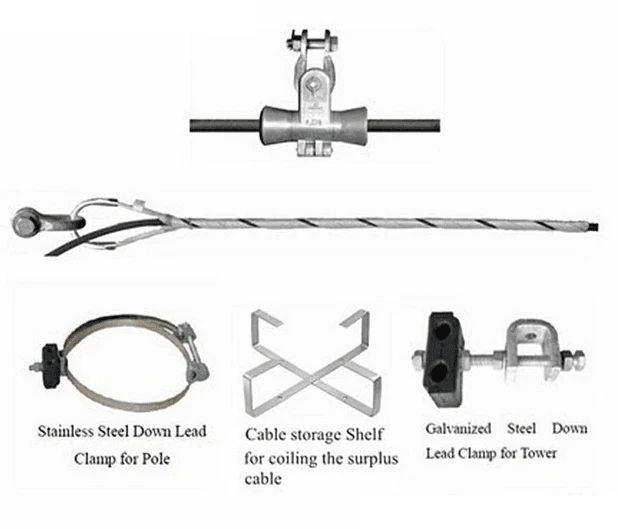Introduction

These robust components are designed to provide stability and safety in various applications, ensuring that heavy loads are supported without compromise. Choosing the right shackle can make all the difference in maintaining structural integrity and operational efficiency.
Understanding Transmission Anchor Shackles
A transmission anchor shackle is a specialized hardware piece used primarily for securing and connecting components within transmission systems. Its unique design allows for easy attachment while providing the necessary strength to withstand significant loads. With various types available, including U anchor shackles, it's crucial to understand their specific functionalities and advantages.
Importance of Choosing the Right Shackle
Selecting the appropriate anchor shackle is vital for ensuring safety and reliability in any project involving heavy lifting or securing loads. The wrong choice can lead to catastrophic failures, risking both equipment and personnel safety. Therefore, when pondering What is an anchor shackle used for? remember that it plays a pivotal role in stabilizing structures like those used for fixing transmission lines.
Overview of Various Shackle Types
There’s a diverse range of shackle types available on the market today, each tailored for different applications and load requirements. From U anchor shackles known for their versatility to D shackles that offer robust performance under pressure, understanding these options will help you make informed decisions. Additionally, knowing whether to choose screw pin or bolt type shackles can further enhance your project’s safety profile.
What is a Transmission Anchor Shackle?

When we talk about a transmission anchor shackle, we're diving into an essential component used for securing transmission lines and ensuring stability in various applications. This sturdy piece of hardware plays a crucial role in connecting cables and supporting heavy loads, making it indispensable in the field of construction and electrical engineering. Understanding its definition and functionality helps you appreciate why choosing the right shackle can make all the difference.
Definition and Functionality
A transmission anchor shackle is a type of fastening device designed to connect two components securely while allowing for some flexibility in movement. Typically made from durable materials like steel, these shackles come in various shapes, including the popular U anchor shackle design, which provides excellent load distribution. Their primary function is to facilitate safe connections between transmission lines and other structural elements while ensuring that they can withstand significant tension without failing.
Key Features to Consider
When selecting a transmission anchor shackle, there are several key features to keep in mind to ensure it meets your specific needs. First off, consider the load capacity; each shackle has a maximum weight limit that should not be exceeded to maintain safety during use. Additionally, pay attention to the material quality—high-strength steel or corrosion-resistant coatings are vital for durability, especially if you plan on using them outdoors or in harsh environments where weather conditions could take their toll.
Common Applications in the Field
Transmission anchor shackles find their way into a variety of applications across different industries due to their versatility and reliability. One common use is fixing for transmission line setups where they help secure wires against wind forces or other environmental impacts. Beyond that, you'll find these shackles employed in construction sites for lifting heavy equipment or even rigging setups where safe connections are paramount—truly showcasing what an anchor shackle is used for!
Types of Anchor Shackles Explained

U Anchor Shackle Characteristics
U anchor shackles are known for their distinctive U-shape, which provides a robust structure designed to handle heavy loads with ease. These shackles are particularly favored in applications where strength and reliability are paramount, such as securing transmission lines. The open design allows for easy attachment, making it a go-to choice for many professionals looking to ensure safety in their operations.
One key characteristic of U anchor shackles is their ability to distribute loads evenly across the shackle body, reducing stress points that could lead to failure under load. Additionally, they often come with a safety factor rating that indicates how much weight they can safely support beyond typical use. This makes them ideal not only for anchoring but also for lifting tasks where stability is essential.
Another advantage of U anchor shackles is their versatility; they can be used in various settings from construction sites to industrial applications. Their robust construction means they can withstand harsh environmental conditions without compromising performance. Overall, when considering what an anchor shackle is used for, U anchor shackles stand out as reliable options.
D Shackle Versatility
D shackles are another popular type of transmission anchor shackle that boasts remarkable versatility across numerous applications. Their name derives from their D-shaped design, which allows them to handle loads efficiently while minimizing lateral movement during use—an essential feature when securing transmission lines or heavy equipment. This shape ensures that forces exerted on the shackle are evenly distributed along its length.
One notable aspect of D shackles is their adaptability; they can be employed in everything from marine settings to construction sites where secure connections are vital. They also come in various sizes and materials, making it easy to find a suitable option tailored specifically for your load requirements and environmental conditions. As such, D shackles serve both casual users and industry professionals alike who need reliable solutions.
Moreover, these versatile tools excel at facilitating safe connections between different components within rigging systems or during heavy lifting operations. Whether you're working with chains or cables, using a D shackle ensures you maintain structural integrity while addressing diverse project demands effectively. Thus, understanding what an anchor shackle is used for becomes clearer with the recognition of how adaptable D shackles truly are.
Screw Pin vs. Bolt Type
When selecting between screw pin and bolt type anchors within your transmission anchor shackle arsenal, it's essential to understand their respective advantages and limitations carefully! Screw pin shackles feature a threaded pin that screws into place—making them quick and easy to use when time matters most on site! However, this convenience comes at a cost; if not properly secured after installation (and let's face it—who hasn't been distracted?), there’s potential risk of accidental disengagement under load!
On the other hand, bolt-type anchors offer enhanced security through a bolted connection that's less likely to loosen over time compared with its screw counterpart—a critical consideration when fixing for transmission line installations where reliability reigns supreme! While installation may take slightly longer due diligence pays off since these bolts provide peace-of-mind knowing your connection will remain steadfast even under extreme conditions!
Ultimately choosing between screw pin versus bolt-type anchors boils down personal preference along with specific project requirements; however both options deliver dependable performance across myriad situations involving what an anchor shackle is used for! So whether you're tightening up those cables or lifting hefty machinery don’t forget: secure connections equal safer operations!
What is an Anchor Shackle Used For?

Anchor shackles serve as vital components in various applications, particularly in securing and supporting heavy loads. Among the many types, the transmission anchor shackle stands out for its specific use in fixing for transmission lines, ensuring stability and safety. Understanding what an anchor shackle is used for can help you make informed decisions when selecting the right type for your needs.
Securing Transmission Lines
One of the primary uses of a transmission anchor shackle is securing transmission lines. These shackles are designed to withstand significant tension while maintaining structural integrity, making them ideal for this purpose. By utilizing a U anchor shackle, engineers can ensure that transmission lines remain firmly anchored, preventing any potential sagging or disconnection that could lead to outages or accidents.
Supporting Heavy Loads
Supporting heavy loads is another critical function of anchor shackles, especially in construction and industrial settings. The robust design of a U anchor shackle allows it to bear substantial weight without compromising safety or performance. When dealing with heavy machinery or materials, using a high-quality transmission anchor shackle ensures that everything remains securely fastened during lifting or transportation.
Moreover, these shackles provide peace of mind by facilitating safe connections between various components involved in lifting operations. Whether it's hoisting equipment at a construction site or stabilizing structures during assembly, having reliable shackles can make all the difference in operational efficiency and worker safety. So next time you're faced with heavy-duty tasks, remember that choosing the right anchor shackle can be your best ally.
Facilitating Safe Connections
Facilitating safe connections between different elements is yet another essential use of an anchor shackle. These devices allow for easy attachment and detachment while ensuring that the connection remains secure under load conditions. The versatility of both U anchor shackles and traditional designs means they can be adapted for numerous applications where safety is paramount.
In scenarios where quick adjustments are necessary—like during maintenance on transmission lines—the ability to easily connect and disconnect components using a reliable transmission anchor shackle becomes invaluable. This feature not only saves time but also enhances overall operational safety by minimizing risks associated with improper connections or sudden load shifts.
Selecting the Right Shackle for Your Needs

Load Capacity Considerations
One of the primary factors in selecting a transmission anchor shackle is load capacity. Each shackle has a specified working load limit (WLL) that indicates how much weight it can safely support without risking failure. When asking yourself, What is an anchor shackle used for?, remember that if you exceed this limit, you're not just risking equipment failure; you're endangering lives! Always opt for a U anchor shackle or any other type with a WLL that comfortably exceeds your anticipated loads.
Additionally, consider dynamic versus static loads; dynamic loads involve movement and can exert more force on the shackle than static loads. So if you're using your shackles in applications where forces fluctuate—like securing transmission lines during storms—be sure to account for those variations in your calculations. A little caution goes a long way when it comes to keeping things secure!
Environment and Usage Conditions
The environment in which you plan to use your transmission anchor shackle plays an equally vital role in its selection process. Factors like exposure to corrosive elements (think saltwater or chemicals) can rapidly degrade certain materials unless you choose corrosion-resistant options like stainless steel or galvanized finishes. If you’re fixing for transmission lines in harsh conditions, this consideration becomes even more critical.
Moreover, temperature extremes can affect both the material properties and performance of shackles over time; some materials may become brittle or lose strength under extreme heat or cold. Be sure to assess where you'll be using these shackles—whether it's on rugged terrain or inside controlled environments—to ensure their longevity and reliability in those specific conditions.
Tips from Spark Fittings
First off, always consult product specifications and guidelines provided by manufacturers; they know their products inside out! Don’t hesitate to reach out with questions if something seems unclear—getting expert advice could save you time and money down the line.
Another valuable tip is to invest in quality over quantity; sometimes spending a bit more upfront on high-quality shackles pays off by reducing replacement costs due to failures later on. Lastly, ensure proper training for anyone handling these shackles; understanding how they work will enhance safety measures significantly while minimizing risks associated with improper usage.
Installation and Maintenance Tips

Proper Installation Techniques
Installing a U anchor shackle may seem straightforward, but there are nuances that can make all the difference in safety and performance. Start by ensuring that the load is evenly distributed across the shackle; this helps prevent undue stress on any single point. Additionally, always follow manufacturer guidelines regarding torque specifications when securing bolts or pins—this ensures that your transmission anchor shackle remains tightly fastened under load.
Don’t forget to inspect the attachment points before installation; they should be free of debris or corrosion to guarantee a secure fit. Using a wrench designed for shackles can also help avoid over-tightening, which could damage both the shackle and its connection points. Remember, a little attention during installation can save you from big headaches later on!
Regular Inspection Guidelines
Once your U anchor shackle is installed, regular inspections become crucial in maintaining its integrity over time. Look for signs of wear such as cracks, deformities, or rust—these issues can compromise performance when you ask it to do its job! Ideally, inspections should occur at least once every month or more frequently if used in harsh conditions.
Pay special attention to moving parts like screw pins; they should operate smoothly without any resistance or play. If you notice anything amiss during your inspection—like excessive wear—it’s time to replace that transmission anchor shackle before it leads to an unfortunate incident while fixing for transmission lines!
Maintenance Best Practices for Longevity
Maintaining your transmission anchor shackle doesn’t just stop at inspections; it requires proactive measures too! Regularly clean your shackles with mild soap and water to remove dirt and grime that could lead to corrosion over time. After cleaning, ensure they’re thoroughly dried before storage or reinstallation.
Lubrication is another essential aspect of maintenance—applying a suitable lubricant will keep moving parts functioning smoothly while preventing rust buildup on metal components. And remember: always store shackles in a dry place away from direct sunlight when not in use; this simple practice extends their lifespan significantly!
In summary, understanding what an anchor shackle is used for goes hand-in-hand with proper care practices—investing time now pays off immensely later on!
Conclusion

In wrapping up our exploration of anchor shackles, it’s clear that understanding the nuances of these essential components is crucial for anyone involved in transmission line work or heavy load support. From the various types, such as the versatile U anchor shackle to the robust D shackles, each serves a distinct purpose and offers unique benefits. Choosing the right transmission anchor shackle can significantly enhance safety and efficiency in your operations.
Key Takeaways on Anchor Shackles
When considering what is an anchor shackle used for?, it’s important to remember that these devices are not just metal loops; they are vital tools for securing transmission lines and supporting heavy loads. The right shackle ensures safe connections, which can prevent accidents and equipment failures. Always prioritize load capacity, environmental conditions, and specific application needs when selecting your shackles.
Final Thoughts on U Anchor Shackles
The U anchor shackle stands out for its simplicity and effectiveness in various applications. Its design allows for easy handling while maintaining strong performance under load—perfect for fixing for transmission line projects where reliability is paramount. As you weigh your options, consider how a well-chosen U anchor shackle can streamline your operations and enhance safety.
Importance of Quality from Spark Fittings
Quality matters when it comes to transmission anchor shackles; investing in reputable brands like Spark Fittings ensures you get durable products designed to withstand demanding conditions. Their commitment to excellence means you can trust their shackles will perform reliably over time, reducing risks associated with inferior products. Remember, a small investment in quality today could save you from costly repairs or accidents down the road.

